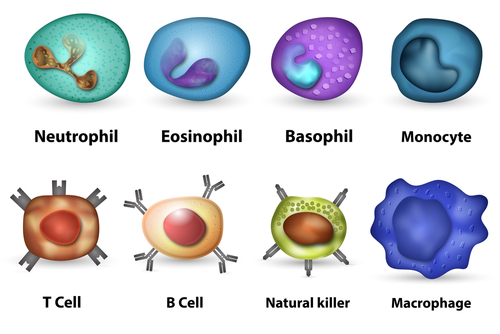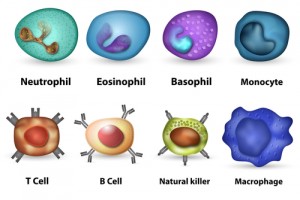Newly Identified Immune Cell Sheds Light on Multiple Sclerosis Cause
Written by |

 Researchers from the National University of Singapore have found a new type of immune cell that could aid in the development of treatments for multiple sclerosis (MS). The study was published on November 21 in the journal Cell Research entitled, “STAT5 programs a distinct subset of GM-CSF-producing T helper cells that is essential for autoimmune neuroinflammation.”
Researchers from the National University of Singapore have found a new type of immune cell that could aid in the development of treatments for multiple sclerosis (MS). The study was published on November 21 in the journal Cell Research entitled, “STAT5 programs a distinct subset of GM-CSF-producing T helper cells that is essential for autoimmune neuroinflammation.”
MS is the most common central nervous system (CNS) autoimmune disease. It is characterized by the unpredictable loss of myelin. Myelin insulates CNS cells, aiding in their transmission of information and when it is lost, severe problems with movement, pain, weakness, or other symptoms can result. Worldwide, approximately 2.5 million people are diagnosed with MS, 300,000 to 400,000 of which live in the U.S. alone. The causes of MS are still unknown, although scientists believe that environmental influences may trigger MS in people who are genetically susceptible. Treatments can reduce the severity of MS, but do not cure the disease. Further medical interventions for MS are greatly needed.
The current study could potentially aid in developing novel medications for MS. The newly identified T cell is called TH-GM. TH stands for “T helper,” which is a subset of the T cell. TH-GM cells secrete granulocyte macrophage colony-stimulating factor (GM-CSF) and can act on other immune cells, potentially causing inflammation, loss of myelination, and nerve damage.
The research team was led by Professor Xin-Yuan Fu, Senior Principal Investigator from CSI Singapore and Professor at the Department of Biochemistry at the NUS Yong Loo Lin School of Medicine, and Dr Wanqiang Sheng, post-doctoral fellow at CSI Singapore. The scientists specifically found that the actions of a protein known as STAT5 activated the cells producing GM-CSF. STAT5 was in turn activated by a molecule known as interleukin-7 (IL-7). When mice with an experimental version of MS (called experimental autoimmune encephalomyelitis or EAE), lacked STAT5 they had diminished MS symptoms — measured based on immune cells found in spinal cord sections taken from the mice and other markers of inflammation. Blocking IL-7 decreased this inflammation, and adding IL-7 greatly increased both GM-CSF-producing cells and GM-CSF secretion.
[adrotate group=”4″]
These effects were specific to the MS animal model, but STAT5 regulation of GM-CSF secretion by the cells was not observed as mechanisms for inflammation in a gastrointestinal inflammatory condition, a mouse model of colitis.
In the paper, the authors concluded “In summary, we found that a distinct subset of T helper cells (TH-GM), which is regulated by IL-7-STAT5 signaling axis and predominantly produces GM-CSF and IL-3, is critical for autoimmune neuroinflammation.”
The study may shed light on the mechanisms underlying inflammation and myelin loss in MS and provides a link between how IL-7 and STAT5 could influence the detrimental effects of TH-GM cells. Future research may focus on medications that block STAT5 or TH-GM cells, as potential treatments for MS.





